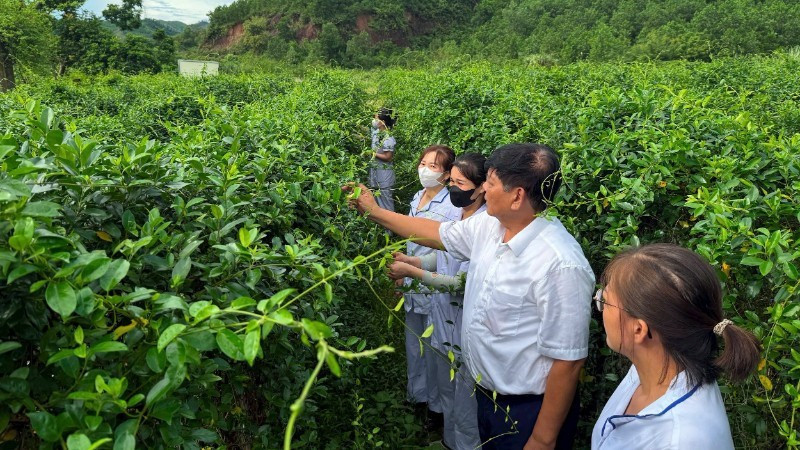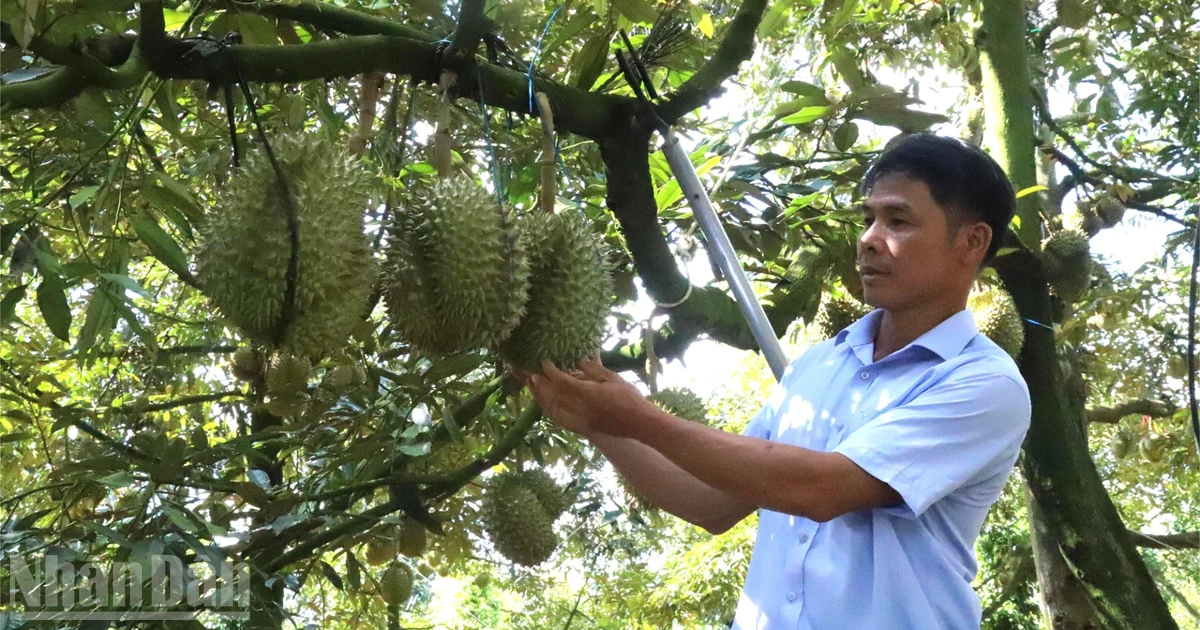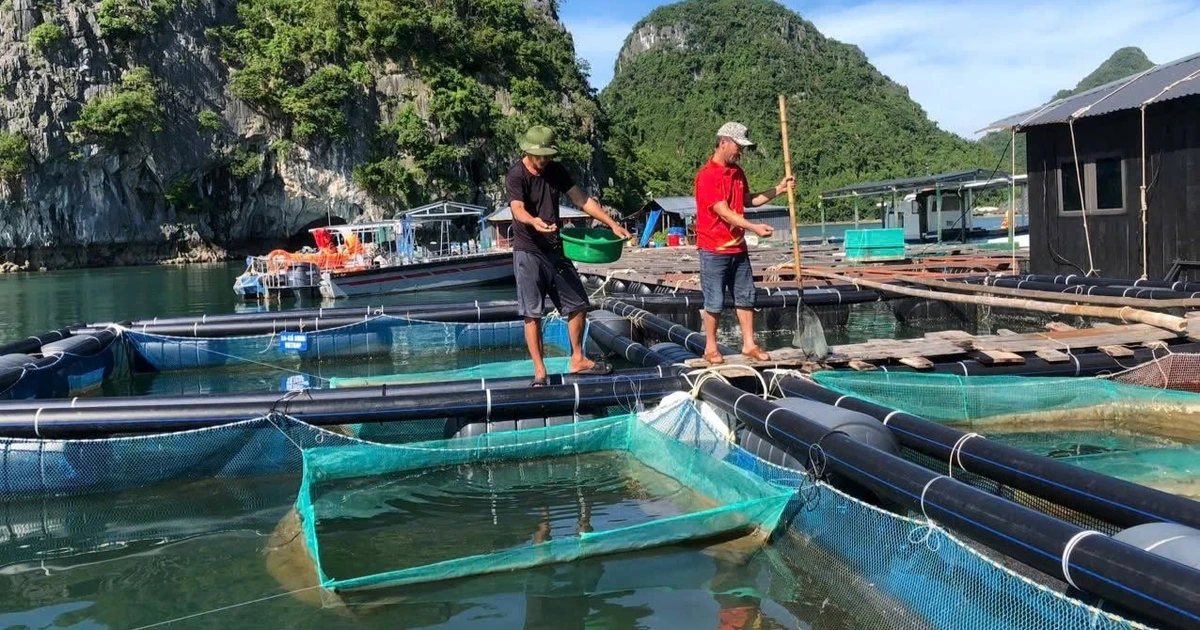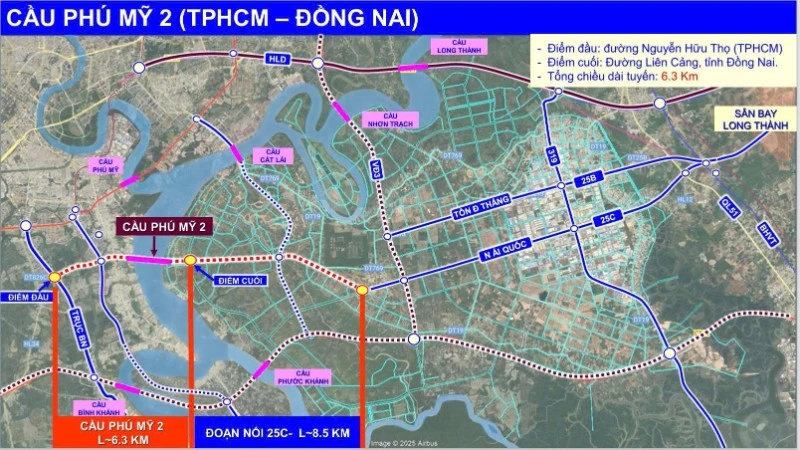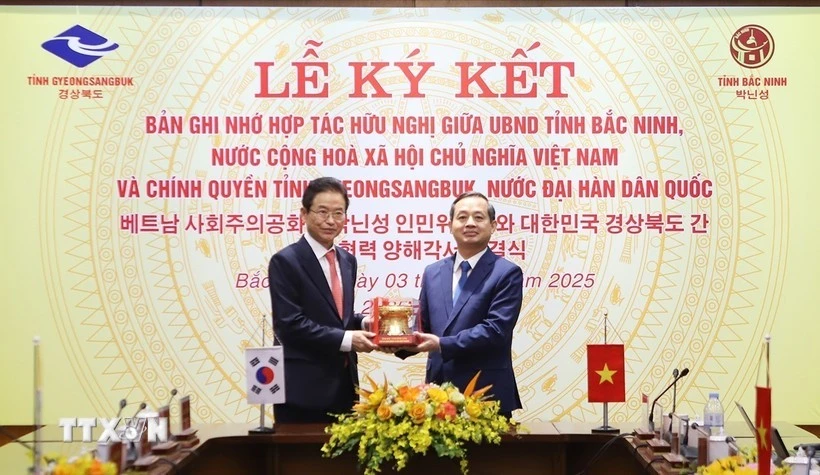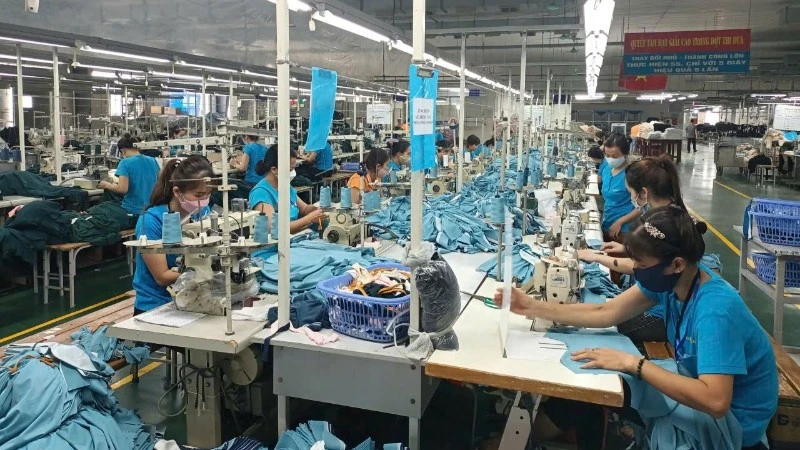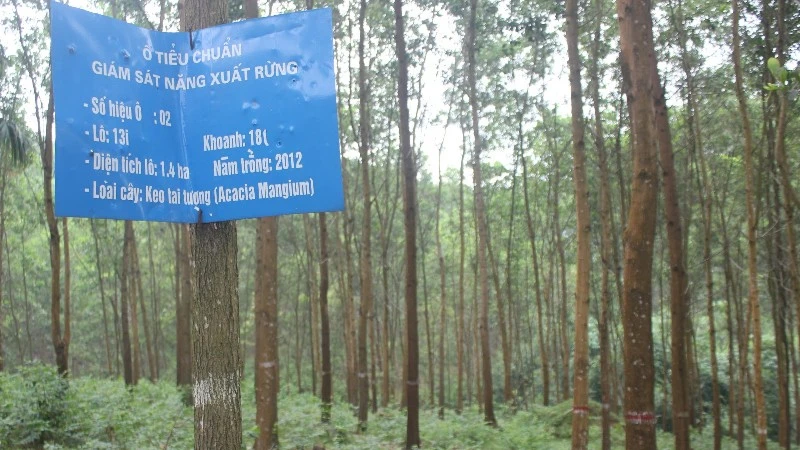The policy of restructuring crops in connection with medicinal plants is considered a “bright spot” that should be expanded. However, for sustainable development, the joint efforts of the state, scientists, businesses, and farmers are needed in planning, cultivation, production, and brand building.
Prosperity from medicinal plants
At the Dong Bac Limited Liability Company for Cultivation, Production and Processing of Medicinal Plants (Son Hai Hamlet, Hai Hoa Commune, Quang Ninh Province), rows of lush green Gynostemma pentaphyllum, Solanum procumbens and Gymnema sylvestre flourish.
According to Director Pham Viet Trung, the process of cultivating and harvesting medicinal plants is carried out in an environmentally friendly manner. We place particular emphasis on inheriting and utilising indigenous knowledge and traditional folk experiences in the use of medicinal plants, while working with scientists to screen and identify the most effective formulas and remedies for disease prevention and health enhancement.
Since its establishment in 2011, Dong Bac Medicinal Plants has focused on studying climate, soil conditions, and farming practices of local households. The company has trialed several medicinal species such as Gynostemma pentaphyllum, Solanum procumbens, Gymnema sylvestre, Phyllanthus urinaria, and Vang tea. To date, raw materials are strictly monitored from seed production, cultivation, and care, to harvesting, ensuring safety and quality.
Alongside investments in irrigation systems, shading facilities, and new technologies to increase productivity, the company expands its raw material zones by cooperating with cooperatives, transferring techniques to households through hands-on training, and purchasing products for farmers. Currently, apart from nearly 10 hectares of specialised material areas, the company also develops about 20 hectares of household-based cultivation, helping farmers earn 6–10 times more than growing food crops.
In the past, medicinal plants were scattered in home gardens, mainly for family use or small-scale sale. Today, with increasing demand for research, pharmaceutical production, and exports, many localities consider medicinal plants as staple crops replacing less efficient ones. Several species bring high and stable incomes, such as: Polyscias fruticosa (200–300 million VND per ha per year), Amomum longiligulare (250–400 million VND per ha per year), and Morinda officinalis (150–250 million VND per ha per year).
Quang Ninh, along with mountainous provinces such as Lao Cai and Son La, as well as delta provinces like Ninh Binh and Hung Yen, is developing specialised medicinal plant cultivation zones.
In Lao Cai, artichoke is considered a “golden plant,” generating hundreds of billions of VND annually for both enterprises and farmers. Cinnamon and anise have become sustainable “wealth-creating crops” in many northern mountainous provinces. Crop restructuring linked with medicinal plants is being seen as a strategic pathway.
Statistics show that Viet Nam has over 5,000 medicinal plant species, about 300 of which have high economic value and are widely cultivated and used. Domestic demand is estimated at 60,000–80,000 tons annually, but local supply only meets 25–30%. This presents a large opportunity for scientists, businesses, and farmers to develop.
Nguyen Trong Dien, Director of Quang Ninh Department of Health affirmed that medicinal plants can be considered “strategic crops” that help farmers sustainably escape poverty. However, to maximize their strengths, localities must have comprehensive planning linked with processing needs and market consumption.
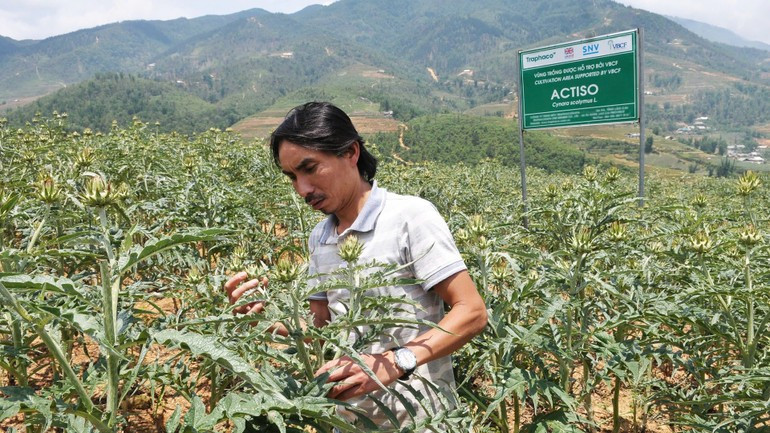
Joint efforts of the “four stakeholders”
According to Deputy Minister of Health Do Xuan Tuyen, Viet Nam holds considerable potential for the development of medicinal plants, but unlocking that potential requires addressing a number of challenges.
Currently, medicinal plant zoning is inconsistent, fragmented, and small-scale, making it difficult to apply high technology and create closed value chains. Most farmers are accustomed to rice, corn, and cassava cultivation, thus lacking knowledge and experience when shifting to medicinal plants. These crops require strict processes of cultivation, care, and harvesting, with high technical demands, creating risks for farmers if not strictly followed.
In addition, there are still too few processing enterprises and purchasing companies; value chain linkages are not yet sustainable; and the four stakeholders (state, scientists, enterprises, farmers) has formed but is not yet tight. Notably, unidentified and substandard medicinal herbs still exist, making domestic medicinal development difficult.
Medicinal plants demand strict cultivation techniques, but most households have not received proper technical transfer. Harvesting and processing are often based on oral traditions. At the same time, wild medicinal plant exploitation is rampant, focusing on collection rather than conservation and regeneration. The lack of coordination between health and agriculture sectors in research and development has led to material shortages and quality risks.
Managing the origin of exploited medicinal plants remains difficult, requiring inter-ministerial cooperation to ensure that medicinal products circulating on the market have clear origins.
At the recent conference reviewing five years of the traditional medicine–modern medicine integration programme, many opinions stressed the need for specific support policies to create breakthroughs for Vietnamese medicinal plants.
Accordingly, the state must develop zoning plans for medicinal cultivation; create supportive policies; promote technology transfer in planting, care, preliminary processing, and preservation; and build production–consumption value chains between farmers and enterprises.
Importantly, the joint effort of the four stakeholders is essential, with enterprises playing a leading role in linking scientists, supporting growers, organizing training, establishing technology transfer models, applying high technology in cultivation and harvesting. Strict control measures are needed to manage unidentified medicinal imports used in production.
For sustainable development, medicinal plant zoning must be tied to each locality’s comparative advantages, especially with indigenous and endemic species, avoiding mass planting that causes oversupply and price drops. At the same time, participation in global supply chains is needed, rather than merely exporting raw materials across borders.
